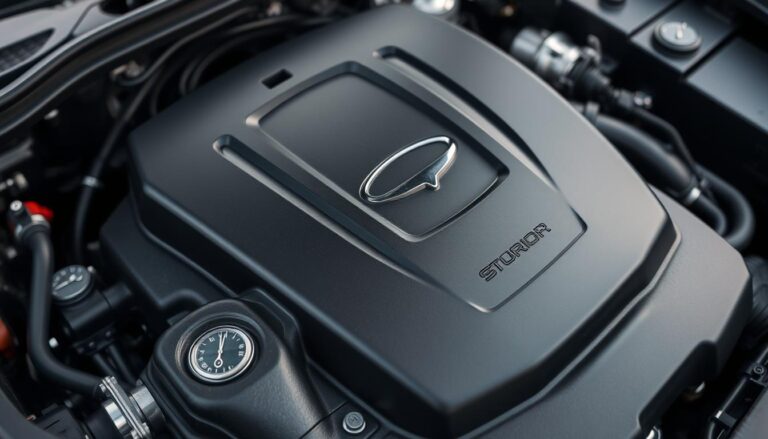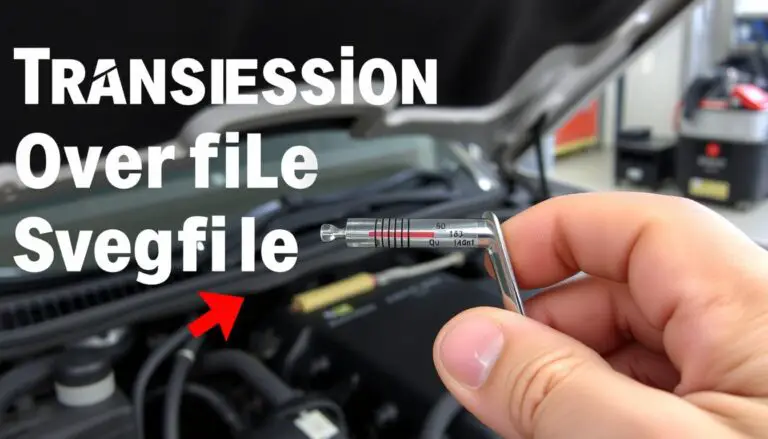This guide sets clear expectations for anyone who wants to know gauge and thickness in auto body panels. You’ll learn why a smaller gauge number means thicker, stronger material and how common gauges map to inches and millimeters.
Most exterior body panels fall between 16 and 24 gauge steel. That range covers roughly 0.060 in (16 ga) down to 0.024 in (24 ga). Structural sections often use heavier metal or high-strength steel for safety.
Modern engineering pairs thinner sheet metal with advanced alloys to save weight while keeping crash performance high. OEM and aftermarket parts can differ in gauge and fit, which matters for welding and long-term repairs.
Key Takeaways
- Gauge and thickness are inverse: lower gauge = thicker material.
- Most exterior body panels use 16–24 gauge steel; structural areas may be thicker.
- Common conversions help you compare gauges to inches and mm.
- Modern cars use thinner panels plus high-strength steel for safety and economy.
- Measure on-vehicle with calipers or gauge tools to confirm sheet metal thickness.
What “thickness” means in automotive sheet metal and why it matters today
Actual panel thickness controls stiffness, dent resistance, and how surfaces react during a collision. In practical terms, thickness is the measurable metal depth that sets stiffness and affects how body panels bend or fold under load.
Design teams now pair thinner outer skins with higher-strength cores in crumple zones. This lets engineers tune energy absorption while cutting overall weight for better fuel economy and lower emissions.
Thickness also drives repair strategy. Thinner sheet metal shapes easily but needs careful heat control during welding to avoid burn-through and distortion. Structural areas use thicker steel, while outer panels often stay lighter for fit and finish.
- Safety: controlled deformation uses thinner high-strength sections.
- Weight: less mass improves economy when materials are optimized.
- Repair: thinner gauges demand different tools and technique.
Remember: gauge numbers tell part of the story, but material grade, coatings, and processing change performance. Two panels with the same gauge can behave quite differently once installed and finished.
Sheet metal gauge basics: how gauge numbers translate to thickness
Gauge labels work backward: a smaller number means a thicker sheet, which many newcomers find surprising.
Gauge defined: the gauge number is an inverse scale for metal thickness. Lower gauge = more material. That rule helps you pick the right panel or replacement part.
Common conversions for automotive steel
Here are practical examples for typical automotive steel in the 16–24 gauge range:
- 16 ga ≈ 0.0598 inches (1.519 mm)
- 18 ga ≈ 0.0478 inches (1.214 mm)
- 20 ga ≈ 0.0359 inches (0.912 mm)
- 22 ga ≈ 0.0299 inches (0.759 mm)
- 24 ga ≈ 0.0239 inches (0.607 mm)
Steel vs aluminum and fabrication notes
The same gauge number can mean different things across metals. Steel follows a common chart, while aluminum is often called out by decimal inches. That difference creates confusion unless you document both gauge and decimals.
Decimals matter in the shop. Exact thickness guides brake settings, roll tooling, and welding parameters. Small tolerance shifts from coil processing affect bend allowance and heat input. Plan for batch variation and verify actual thickness before fabrication.
Thickness by vehicle part and era: classic vs modern body panels
Across eras, outer skins grew thinner while structural rails kept heavier gauges or upgraded to HSS. Classic cars commonly used thicker steel for both visible panels and frames. That made panels easier to repair with simple techniques.
Post-1980s designs lean on thinner panels and targeted high-strength steel in critical locations. This change improves fuel economy and crash management but alters repair strategy.
Pre-1980s vs post-1980s: gauge shifts over time
Classic outer panels often sat around 18–20 gauge. Modern outer skins frequently range 22–24 gauge while structural parts use 12–16 gauge or HSS. Example: a classic door skin at 18–20 ga may become 22–24 ga on newer models.
Typical gauges by component
- Frame rails / structure: 12–16 ga or HSS for modern strength.
- Floor pans: classic ~18 ga; modern ~20–22 ga.
- Quarter panels, fenders: classic ~18 ga; modern ~20–22 ga.
- Door skins, roof, hood: classic ~18–20 ga; modern ~20–24 ga.
OEM vs aftermarket: reproduction panel differences
Aftermarket reproduction panels often arrive in a thinner gauge than original OEM parts. That affects fit, welding heat input, and long-term corrosion resistance. Always verify the actual gauge for each part before ordering.
Pro tip: document measured gauge per part when mixing OEM and reproduction panels to maintain consistent repair strategy.
How Thick is Car Sheet Metal: Understanding Vehicle Bodywork Dimensions in the context of materials used
Automotive designers blend advanced grades and targeted gauges to balance crash performance with lower curb weight.

Safety and crumple zones: engineers place HSS and UHSS at select gauges in crash paths so deformation is predictable. That controlled folding channels energy away from passengers while outer skins collapse in a planned way.
Fuel economy and weight: thinner gauge outer panels cut weight and improve mileage. Designers offset reduced thickness with stronger material and smarter structure so stiffness and durability stay acceptable.
Advanced materials in panels
Steel remains dominant, but aluminum and composites complement modern designs. Aluminum parts often run thicker than steel to match dent resistance, while composites save weight with tailored stiffness.
Cold-rolled steel is preferred for visible automotive sheet areas thanks to smooth finish and consistent thickness. That choice eases fabrication, paint quality, and fit-up.
- Material choice affects corrosion protection and joining methods.
- Mixed metals require adhesives, rivet-bonding, or specialist welding.
- Always verify thickness metal and grade on spec sheets to align forming and weld schedules.
How to measure metal thickness on a vehicle accurately
Accurate thickness checks start with the right tool and a clean test point on the panel. This step avoids bad orders and ensures correct welding settings.
Tools that work: digital calipers vs gauge tools
Use digital calipers for precise readings in inches or millimeters. They give decimal detail useful for fabrication and weld schedules.
Keep a calibrated sheet metal gauge tool for quick checks when speed matters. Use the gauge to narrow the likely range, then confirm with calipers.
Where to measure for reliable readings
Measure only on clean, bare metal. Paint, primer, and filler add thicknesses that skew results.
Best spots include inner flanges, door jamb returns, and edges near factory holes. Those areas expose the true base metal without cutting or grinding.
Converting readings to gauge numbers
Zero the caliper before use and apply steady pressure. Measure multiple points to spot repairs or variation.
Compare the decimal reading to a standard conversion chart to find the gauge number. Remember steel and aluminum use different charts.
| Tool | Use | Typical output | Best spot to measure |
|---|---|---|---|
| Digital caliper | Precise measurement | Decimal inches / mm | Flange or jamb edge |
| Sheet gauge | Quick identification | Gauge range | Exposed edge / hole |
| Calibrated feeler | Confirm thin gaps | Relative fit detail | Near drilled holes |
Record the number and location for each check. Double-check readings on both sides of seams before patching to maintain consistent sheet metal used and welding parameters.
Selecting sheet metal for repairs and fabrication
Select repair stock that balances surface finish, weldability, and the original gauge for best results.

Match the original thickness. Each patch panel should mirror the factory gauge to keep stiffness consistent and to avoid stress concentrations at seams.
Patch panel best practices
Use a metal patch panel that equals the original gauge. A thicker sheet metal patch may feel stronger, but it raises welding heat needs and often warps surrounding areas.
Material choice for visible panels
Cold-rolled steel gets the nod for visible panels. Its smooth finish and consistent thickness make sanding, filler, and paint work predictably.
Welding considerations
Thin panels raise burn-through risk. Plan short stitch welds, allow cool-down intervals, and control heat input to limit distortion.
“Test coupons save time: dial settings on scrap before you touch the car.”
Cutting, forming, and fit-up
Shear or use clean snips, match bend dies to radius, and deburr edges for better fit. Magnetic clamps and precise scribe lines speed alignment and cut filler use.
| Task | Best approach | Why it matters |
|---|---|---|
| Patch selection | Match original gauge | Maintains stiffness, reduces seam cracking |
| Welding | Use MIG for most joints; TIG for delicate edges | Controls heat, lowers burn-through and warpage |
| Test work | Run coupons with chosen gauge | Confirms settings and penetration before repair |
| Fit-up | Magnetic clamps, scribe lines | Improves alignment, reduces filler and rework |
Practical example: stepping up to a thicker sheet often forces higher weld heat. That trade-off can shift panels and add finish work—so match gauge when possible.
When you need guidance on related replacement parts, see this reference on hood weights for fit and handling considerations: hood weight reference.
Standards, tolerances, and sizes: from coil to flat sheets to plate
Service centers process wide coils into leveled, ready-to-cut flat sheets that feed manufacturing lines. Coils commonly arrive at 48 in or 60 in and get leveled, slit, or cut to common lengths such as 10 ft and 12 ft. Smaller 5 ft × 10 ft blanks are frequent for lower waste.
Gauge vs plate: where sheet becomes plate
Transition: material near 7 gauge (~0.188 in) typically moves out of gauge charts and is ordered by decimal inches (for example, 0.250 in).
Thickness tolerance and process impact
Small variations in thicknesses change bend allowance, laser settings, and weld penetration. Plan fabrication around the delivered tolerance band to avoid fit issues and rework.
Supply formats and handling
Coils are leveled into flat sheets; custom lengths reduce scrap. Ordering a nested layout avoids leftover offcuts—for example, choosing blanks that fill a 10 ft sheet prevents a 4 ft remnant.
“Choosing consistent suppliers for flat sheets reduces variability and speeds repeatable runs.”
| Format | Common sizes | Practical notes |
|---|---|---|
| Coil | 48 in, 60 in widths | Feeds shears, slitters, levelers for flat sheets |
| Flat sheets | 4×10 ft, 5×10 ft, 10–12 ft lengths | Optimized cuts reduce scrap in manufacturing |
| Plate metal | ≥7 ga / decimal inches (0.250 in, 0.500 in) | Requires lifting gear; heavier weight affects tooling |
Weight example: a 4×10 16 ga sheet weighs ~90 lb while a 4×10 at 0.500 in approaches ~817 lb. That difference shapes equipment, fixturing, and the metal fabrication workflow.
Conclusion
Confirm actual measurements before you order or cut. Always measure the sheet metal thickness and note the sheet metal gauge for each part. This avoids mismatches that raise welding heat, distortion, or poor fit.
Match the original gauge and material when fitting a patch panel. Cold-rolled steel gives the best surface for visible panels and eases finishing. Aluminum panels often require a thicker section to get similar dent resistance.
Plan the process: pick the correct welding settings, control heat, and choose the right joinery to limit warpage. Balance gauges, weight, and material to deliver durable, OEM-level repairs.
Checklist: confirm the gauge, confirm the metal, confirm the process — then weld and finish with confidence.
FAQ
What does “thickness” mean for automotive sheet metal and why does it matter?
Thickness refers to the physical distance between two faces of a panel, usually given in inches, millimeters, or a gauge number. It affects structural strength, dent resistance, weldability, and crash performance. Thicker material adds weight but increases durability; thinner material saves weight and improves fuel economy but may need reinforcement or advanced high-strength alloys to meet safety targets.
How do gauge numbers translate to actual thickness values?
Gauge is an inverse numbering system: smaller gauge equals thicker metal. For common automotive steel, gauges typically range from 16 ga (about 0.0625 in / 1.59 mm) down to 24 ga (about 0.024 in / 0.61 mm). Exact decimals vary by standard and by metal type, so use a conversion chart for precise planning.
Why do steel and aluminum gauges cause confusion?
Steel and aluminum use different gauge standards and conversion tables. A 20-gauge steel sheet is not the same thickness as a 20-gauge aluminum sheet. Manufacturers and fabricators should rely on decimal thickness or millimeters rather than gauge alone to avoid mismatches.
What gauges are typical for common vehicle components?
Typical ranges: structural frames and heavy reinforcements often use thicker steel (around 14–18 ga). Floor pans and towers commonly sit around 16–18 ga. Outer skins such as doors, fenders, and roofs often use thinner material, from 20–24 ga. Hoods and trunk lids may use aluminum or thinner steel to save weight.
How did panel thickness change over the decades?
Older vehicles (pre-1980s) generally used heavier gauges throughout, prioritizing durability. After the 1980s, manufacturers progressively reduced thickness and adopted high-strength steel and aluminum to meet fuel economy and emissions goals while retaining crash performance through engineered structures.
Are aftermarket reproduction panels the same thickness as OEM?
Not always. Some reproduction or budget panels can be thinner to cut cost and weight. Higher-quality aftermarket panels aim to match OEM thickness and material. Always check specifications or measure thickness before purchasing for repairs.
What role do high-strength steels and UHSS play in modern bodywork?
High-strength steel and ultra-high-strength steel allow designers to use thinner gauges while maintaining or improving crash performance. These materials often appear in critical load paths and crumple zones to control energy absorption without a large weight penalty.
Which tools give the most accurate thickness readings on a vehicle?
Digital or mechanical calipers deliver good accuracy on exposed edges. Magnetic thickness gauges and ultrasonic meters work through coatings and paint for non-destructive readings. Sheet metal gauge tools are quick but less precise than calipers or ultrasonic devices.
Where should I measure to get a reliable thickness reading?
Measure at clean, bare metal areas such as inner seams, trunk lips, or under trim where paint and undercoating are removed. Avoid measuring at heavily corroded spots, welded seams, or painted surfaces unless you use an ultrasonic tool calibrated for coatings.
How should I choose material for patch panels and repairs?
Match the original thickness and material whenever possible. Cold-rolled steel is preferred for visible bodywork because it offers good surface finish and formability. For structural repairs, follow manufacturer specs and consider using similar-strength steel or approved aftermarket replacements.
What welding issues arise when working with thin body panels?
Thin panels are prone to burn-through, distortion, and warping. Use lower heat input techniques such as plug welding, short MIG stitches, or resistance spot welding. Backing, clamps, and slow cooling can reduce stress and maintain fit-up.
When does sheet metal become plate, and how does that affect selection?
The transition from sheet to plate is generally based on thickness; plate refers to heavier, thicker stock used for structural components. Specs vary, but sheets are usually under about 6 mm (0.24 in). Use plate when load-bearing or heavy fabrication demands greater thickness and different forming methods.
What supply formats are common for bodywork materials?
Suppliers offer coils, slitted coils, leveled flat sheets, and cut-to-length blanks. Standard flat sheet sizes might be 4×8 ft or 5×10 ft, while coils serve high-volume stamping. Choose the format that suits forming equipment and production volume.
How tight are thickness tolerances and why do they matter?
Tolerances can be a few thousandths of an inch. Small differences affect flange fit, panel gaps, weld penetration, and formability. For precision repairs or restoration, specify material with documented tolerances to ensure consistent results.
How do I convert a decimal thickness reading to a gauge number?
Use a standard gauge conversion chart for the specific metal type (steel or aluminum). Because standards differ, convert decimal inches or millimeters to gauge only after confirming the applicable standard to avoid errors in material selection.


